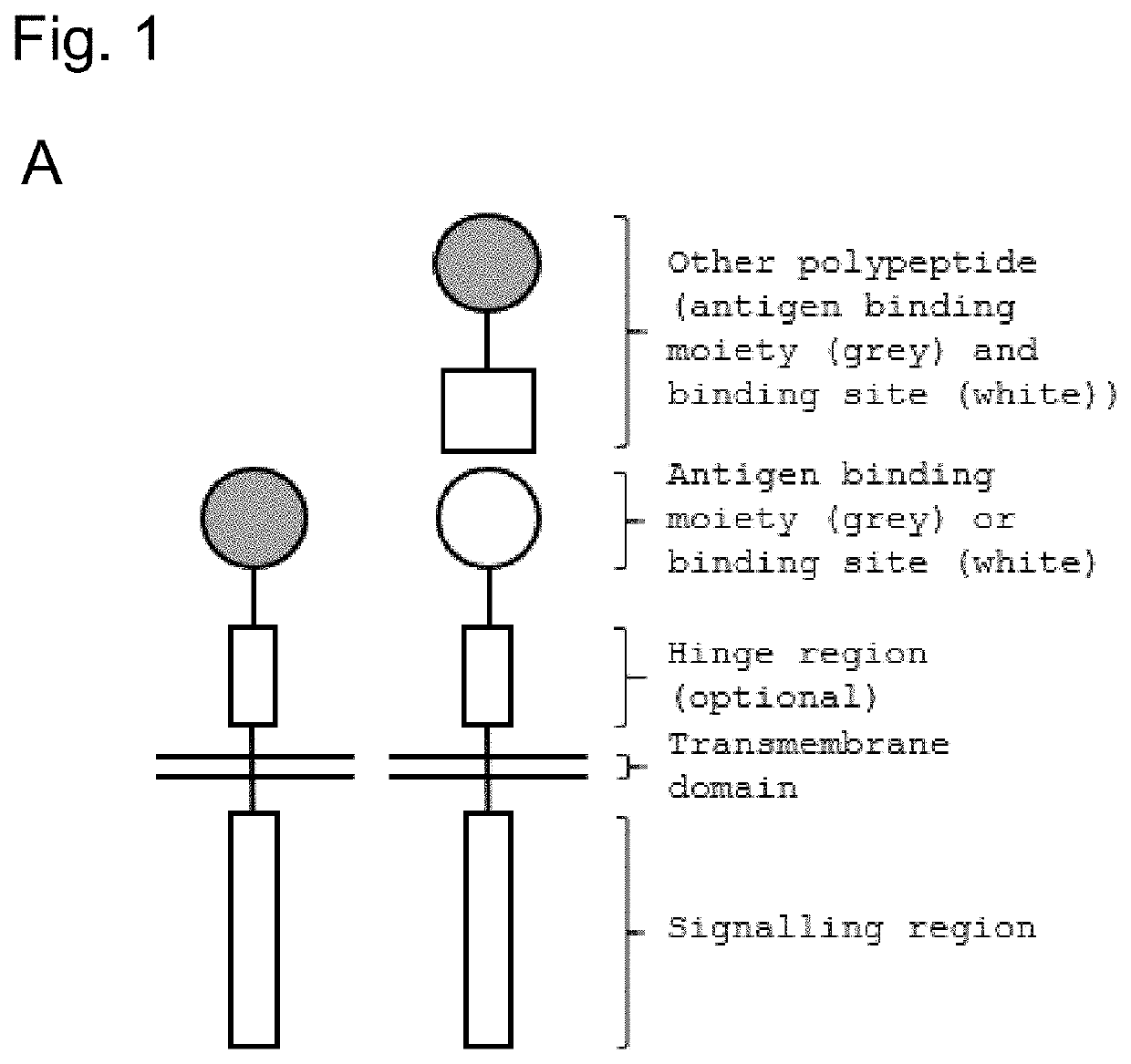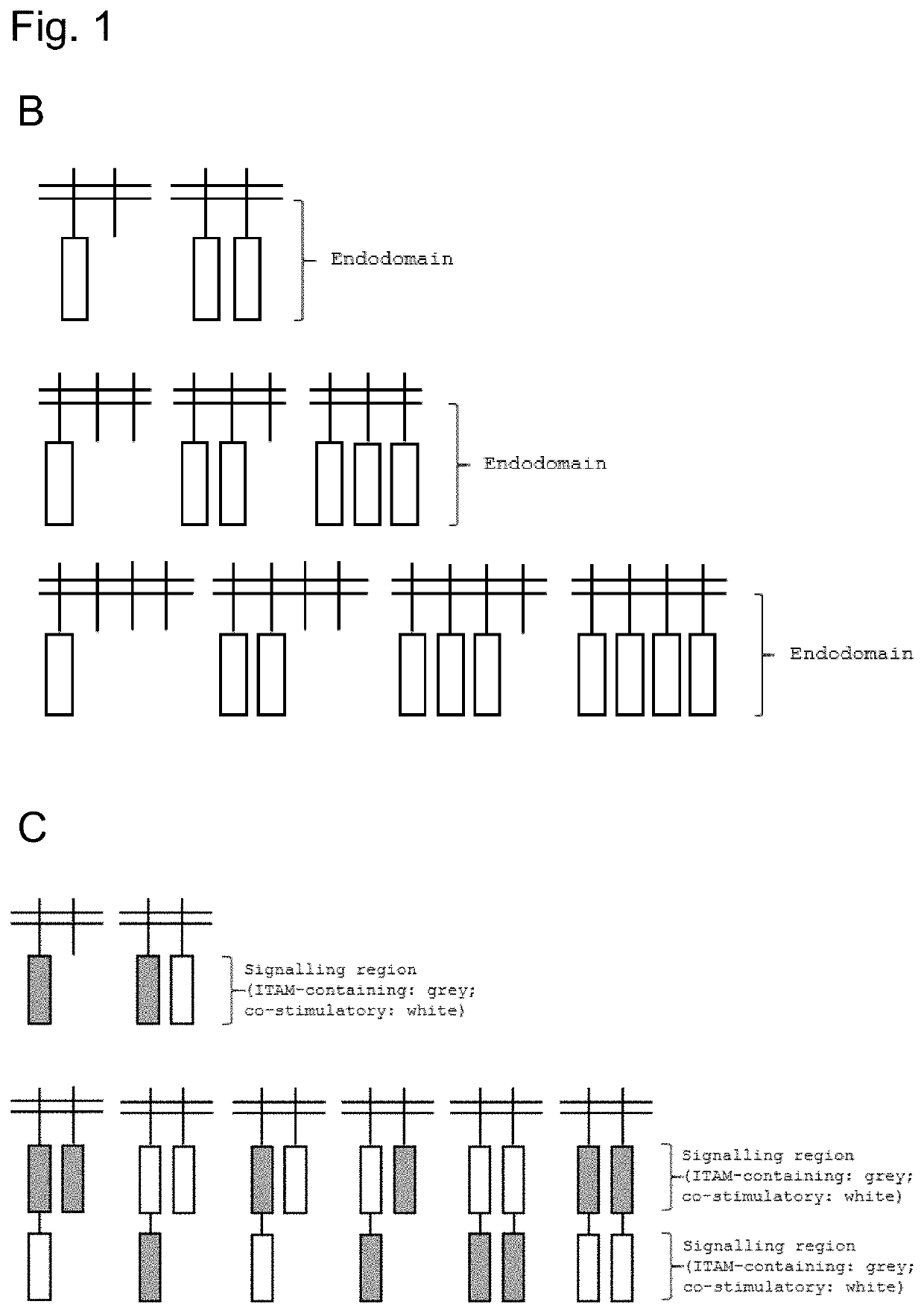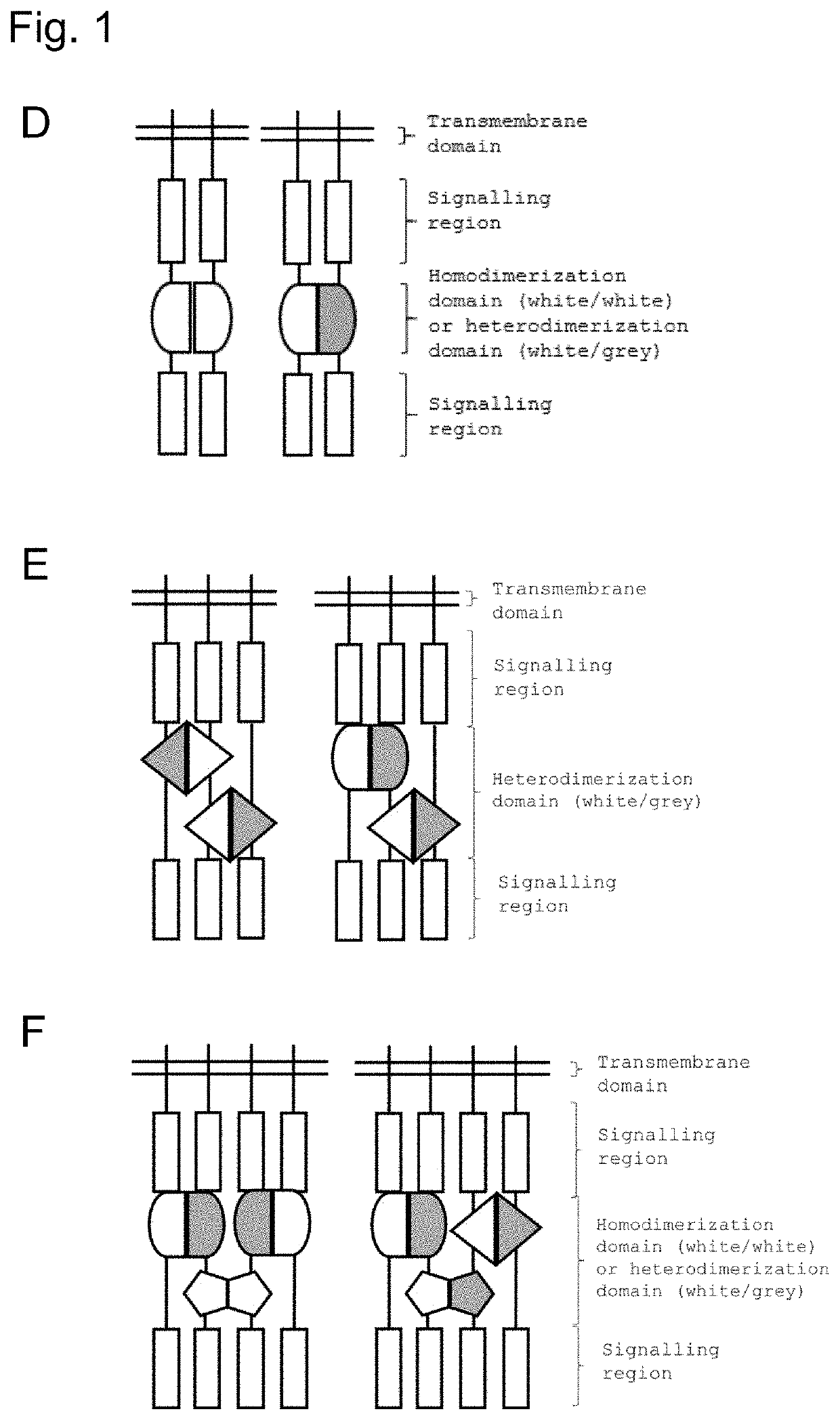A group of chimeric antigen receptors (CARS)
a technology of chimeric antigen receptors and receptors, applied in the field can solve the problem that the activity cannot be controlled in a reversible manner, and achieve the effect of reducing the number of chimeric antigen receptors
- Summary
- Abstract
- Description
- Claims
- Application Information
AI Technical Summary
Benefits of technology
Problems solved by technology
Method used
Image
Examples
example 1
n of a Low-Affinity Single Domain Binding Moiety Based on rcSso7d for Use in a Group of CARs According to the Present Invention
[0326]The first example shows a strategy for generating an antigen binding moiety with low affinity that is suited for use as an antigen binding moiety in a group of CARs, according to the present invention. Reduced charge Sso7d (rcSso7d) is a charge-reduced version of a small (˜7 kDa) DNA-binding protein from the archaeon Sulfolobus solfataricus. Charge-reduction minimizes unspecific binding due to reduced electrostatic interactions. rcSso7d is a single-domain protein antigen binding moiety with high thermal stability and monomeric behaviour and therefore is an example of a suited binding scaffold. Starting from the well characterized antigen binding moiety rcSso7d E11.4.1, which binds to human EGFR with a Kd of 19 nM (Traxlmayr et al., J Biol Chem. 2016; 291(43):22496-22508), we generated low affinity mutants by performing an alanine scan in which we repla...
example 2
ular Disulphide Bond-Forming Cysteines Prevent the Full Exploitation of Avidity Effects for Reversible Control of CAR Function
[0334]Extracellular disulphide-bond forming cysteines in extracellular hinge regions as e.g. CD8α can prevent the exploitation of the avidity effect according to present invention. This is demonstrated in example 2, in which the low affinity mutant of the binding moiety “E11.4.1 G32A” of example 1 was fused to CAR signalling backbones in which the two extracellular cysteine residues in the hinge region of CD8α (UniProt ID P01732, positions C164 and C181) were substituted by serine residues or not, respectively. Whereas the cysteine-containing CAR-variant (“Cys”) efficiently triggered T cell activation in response to target cells, the serine-containing variant (“Ser”) did not or only poorly trigger the T cells. This example thus illustrates the importance of preventing disulphide-bond formation for generating CAR molecules that are suited for use in a group of...
example 3
ain Variable Fragments (scFv) can Trigger CAR Clustering in Cell Membranes and Thereby Prevent the Exploitation of the Avidity Effect for Reversible Control of CAR Function
[0341]The third example demonstrates that the integration of scFv-based binding moieties in CAR molecules can prevent the exploitation of the avidity effect for specific recognition of antigen combinations. The schematics of the CAR constructs shown in FIG. 4A illustrate the design of the tested CAR variants (4D5-5-8cys-BB-3z, 4D5-5-8ser-BB-3z, 4D5-5(split)-8ser-BB-FKBP(36V)-3z). In the shown example the scFv 4D5-5 directed against HER2 was used as an antigen binding moiety and incorporated into either a monomeric (“Ser”) or a dimeric (“Cys”) CAR signalling backbone. FIG. 4B shows the expression of the CARs in primary T cells. The effective binding affinity for the scFv 4D5-5 was reported to be 1.1 μM (Liu et al., Cancer Res. 2015; 75(17):3596-3607), which is comparable to the affinity of E11.4.1-G32A. Jurkat T ce...
PUM
| Property | Measurement | Unit |
|---|---|---|
| pH | aaaaa | aaaaa |
| molecular weight | aaaaa | aaaaa |
| molecular weight | aaaaa | aaaaa |
Abstract
Description
Claims
Application Information
 Login to View More
Login to View More - R&D
- Intellectual Property
- Life Sciences
- Materials
- Tech Scout
- Unparalleled Data Quality
- Higher Quality Content
- 60% Fewer Hallucinations
Browse by: Latest US Patents, China's latest patents, Technical Efficacy Thesaurus, Application Domain, Technology Topic, Popular Technical Reports.
© 2025 PatSnap. All rights reserved.Legal|Privacy policy|Modern Slavery Act Transparency Statement|Sitemap|About US| Contact US: help@patsnap.com



